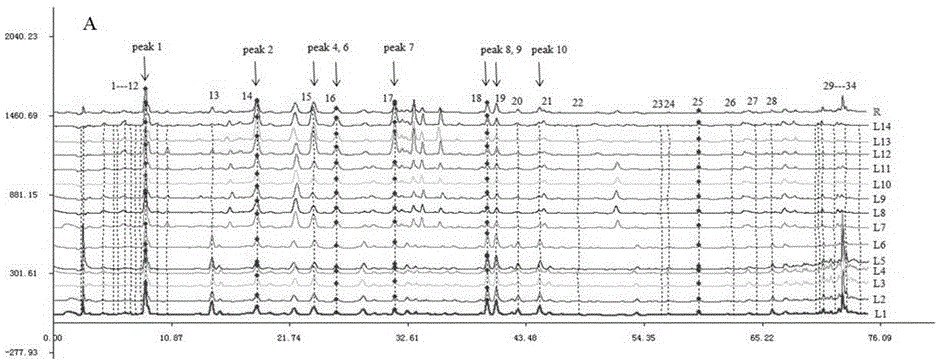Method for identifying linden honey, vicia villosa Roth honey and rape honey
A technology of rapeseed honey and linden honey, which is applied in the field of food science, can solve the problems of counterfeiting and difficult sensory identification, etc., and achieve the effects of low detection limit, good separation effect and good classification effect
- Summary
- Abstract
- Description
- Claims
- Application Information
AI Technical Summary
Problems solved by technology
Method used
Image
Examples
Embodiment Construction
[0023] Further description will be given below in conjunction with the accompanying drawings and embodiments.
[0024] Weigh 10g each of linden honey (14 batches with numbers L1-L14), jasmine honey (11 batches with numbers V1-V11) and rapeseed honey (15 batches with numbers R1-R15) from different origins, and put them in 100mL In a beaker, add 60 mL of distilled water to fully dissolve and then adjust the pH to 2 with HCl; inject the honey sample aqueous solution into a chromatographic column (30 cm × 2.5 cm) equipped with Amberlite XAD? HCl) aqueous solution, elute with 200mL distilled water to remove polar substances such as sugars, then elute the phenolic compounds adsorbed on the resin with 200mL methanol, collect methanol, concentrate under reduced pressure at 42°C to dryness, and dilute the residue with chromatographically pure methanol to 2mL, the resulting solution was filtered through a 0.45μm microporous membrane as the test sample solution, and placed in a sealed pl...
PUM
 Login to View More
Login to View More Abstract
Description
Claims
Application Information
 Login to View More
Login to View More - Generate Ideas
- Intellectual Property
- Life Sciences
- Materials
- Tech Scout
- Unparalleled Data Quality
- Higher Quality Content
- 60% Fewer Hallucinations
Browse by: Latest US Patents, China's latest patents, Technical Efficacy Thesaurus, Application Domain, Technology Topic, Popular Technical Reports.
© 2025 PatSnap. All rights reserved.Legal|Privacy policy|Modern Slavery Act Transparency Statement|Sitemap|About US| Contact US: help@patsnap.com



